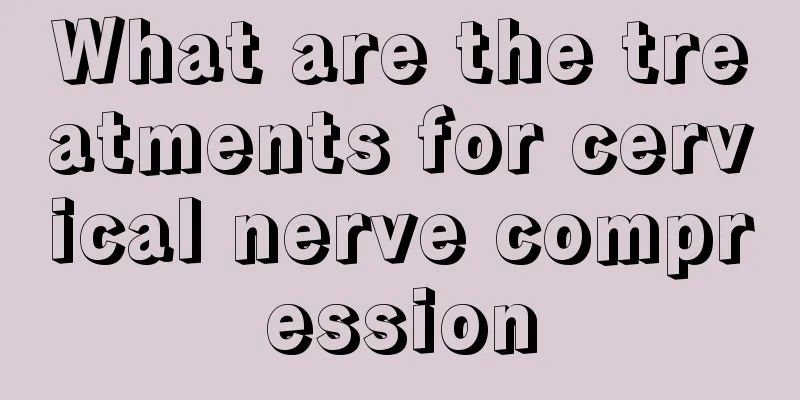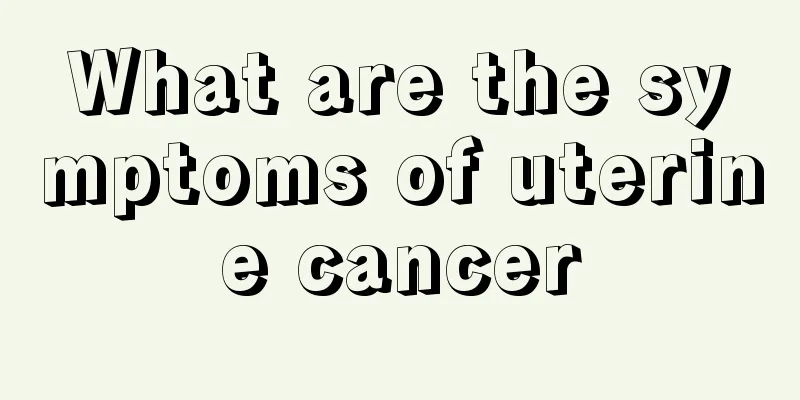What are the treatments for cervical nerve compression

|
Cervical spondylosis has always been a common disease among people. It is most common in workers who need to maintain a posture for a long time, such as teachers who write on the blackboard for a long time, assembly line workers who lower their heads to install parts for a long time, or programmers who sit in front of the computer to write programs for a long time, etc. When cervical spondylosis is more serious, it usually compresses the nerves, causing some abnormal conditions in the human body and causing pain. The following is an introduction to its treatment methods. 1. Direct current drug ion introduction method: drug ions mainly enter the skin through the pores at the openings of the sweat gland ducts, or enter the mucosal tissue through the mucosa and the gaps between epithelial cells. Its physiological therapeutic effect is mainly determined by the pharmacological properties of the introduced drug ions in addition to the effect of electric current. Direct current drug ion introduction method fully exerts the effect of the drug, but because the introduced drug is liquid, it is easy to evaporate and the efficacy is not long-lasting, which limits the therapeutic effect of this method. 2. Massage and traction: Massage helps improve local blood circulation and has an anti-inflammatory and analgesic effect; traction can reduce the pressure of bone spurs on local nerves and tissues and temporarily relieve pain. 3. Acupuncture: Acupuncture can promote blood circulation and relieve pain, and can eliminate local edema and inflammation, but for bone hyperplasia, acupuncture can only play an auxiliary role. 4. Drug treatment: Currently, Western medicine has no effective treatment for this disease, and symptomatic treatment is often used. For example, some antipyretic and analgesic drugs can be taken when there is pain; B vitamins can be used for numbness; those with swollen joints and effusion can be given local extraction of effusion or local blockade and other therapies; Treatment with traditional Chinese medicine: Since this disease is a common and frequently occurring disease, and Western medicine has no ideal treatment method, in recent years, traditional Chinese medicine and Chinese medicine have been widely used to treat this disease in China, especially plasters have a high usage rate, and Anjhe patch is one of the typical examples. 5. Surgical treatment: Surgical treatment is not the first choice treatment for bone hyperplasia. When conservative treatment is ineffective and the condition is severe and seriously affects the patient's life, surgical treatment may be considered. Kind tips In daily life, we should pay attention to correcting bad work and life habits, maintain correct posture, and exercise appropriately. We must remember to stand up and move around every hour or so of continuous computer use or driving, and at the same time move our neck. It is best to do the M-shaped cervical exercise. Remember not to do 360-degree circular exercises, as that can easily hurt our fragile cervical spine. Symptoms of cervical nerve compression The cervical vertebra compresses the sympathetic nerves, causing the patient to have symptoms such as decreased vision, blurred vision, weak eyelids, tearing, photophobia, hearing loss, tinnitus, etc. In severe cases, it may even cause the patient to become blind or deaf. Compression of the vertebral artery nerve by the cervical spine can lead to spasm of the vertebral basilar artery and insufficient blood and oxygen supply to the brain, causing the patient to experience symptoms such as dizziness, vertigo, migraine, visual impairment, tinnitus, and cataplexy. The cervical spine compresses the cervical nerve roots, causing the patient to experience pain and numbness in the neck, shoulders, and back. In addition, the pain may radiate to the wrists and fingers, and the radiation range tends to be consistent with that controlled by the cervical spinal nerves. The cervical vertebra compresses the spinal nerves, which in mild cases may cause numbness of the limbs, soreness of the arms, decreased finger gripping ability, walking like walking on cotton, easy falling when walking, etc. In severe cases, it may even cause the patient to become paralyzed and unable to take care of himself. |
>>: How to treat high C-reactive protein
Recommend
What are the dangers of hypokalemia
Many people do not care about hypokalemia, and ev...
What are the three highs in the human body?
In life, we often hear people talking about the t...
What to do about sweet syndrome
Sweet syndrome is a disease that is very difficul...
Symptoms of erythematous antral gastritis
If you are used to eating one meal and skipping t...
What is the difference between dill and fennel
Dill has another name called wild fennel, so many...
How to replenish blood for anemia
Anemia is a common clinical problem. Many disease...
How to draw eyebrows with eyebrow pencil for beginners
Many friends want to have beautiful eyebrows, but...
What tests are needed if glioma is suspected
Glioma is a brain nerve tumor, which has a certai...
How to check mesenteric lymphoma
Mesenteric lymphoma is diagnosed mainly through i...
The purpose of preoperative radiotherapy for esophageal cancer
The purpose of preoperative chemotherapy plus rad...
What are the differences between Hodgkin's disease and non-Hodgkin's lymphoma
Hodgkin's disease and non-Hodgkin's lymph...
Is the ten-year survival rate of kidney cancer below 4 cm high?
Is the ten-year survival rate high for kidney can...
How much does it cost to treat glioma
How much does it cost to treat glioma? The majori...
Feeling blocked in esophagus after eating
Many people always feel uncomfortable and blocked...
What are the dietary remedies for lung cancer? Three recommended remedies for advanced lung cancer
Lung cancer has swept the world, which has had a ...









